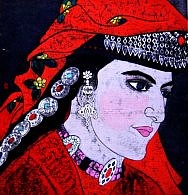| |
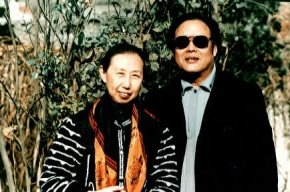
Professors Zhang Xi
Ling and Zhang De Yu
- creators of the Silk Road Collection
The
Silk Road Collection
is an important series of major paintings,
the result of a ten-year collaboration between
two eminent artists, both of whose works have been
exhibited in the Chinese National Gallery in Beijing.
The Silk Road series has been
exhibited in institutional galleries throughout
China and has been purchased in its entirety by Fine Art Imports
|
|
| |
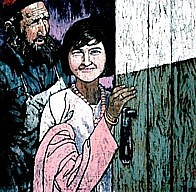
Qing Qing, the special
love of a grandfather for his granddaughter
- captured by Professor Zhang
De Yu
in Kashi Kashgar
From Urumqi, the most inland city in the world,
they travelled more than
five hundred kilometres west to the
medieaval central ancient city of Qu Ce, noted by the Buddhist monk
Xuan
Zang in the 7th century as the Kingdom of Women,
the home of the most beautiful women of
Xinjiang
"and their delightful dancing in elegant and colourful period costume,
twirling long braids of
cloth".
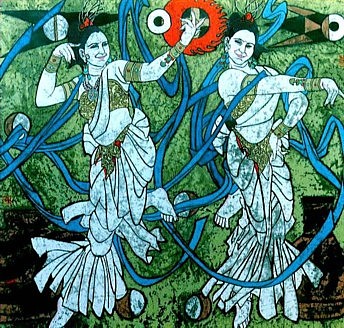
Qu Ce Dancers, painted by Professor
Zhang De Yu
from images on the Temple walls of Kuga, formerly Qu Ce.
|
Bearing precious raw silks, furs and lacquers from China
in one direction, or gemstones, spices and incense in the other, these caravans journeyed across thousands of kilometres
of deserts and through mountain passes, often
travelling at night.
From the ancient
Chinese capital of Xian to the far western city of
Kashi Kashgar, where
the north and south routes of the
Silk Road converged, was alone a
journey of some 5 or 6 months
- several arduous weeks more to the
trading bazaars of India
and Russia and the Persian, Greek and Syrian
merchants
who carried China's wares on to the imperial courts of
Rome, Arabia and India.
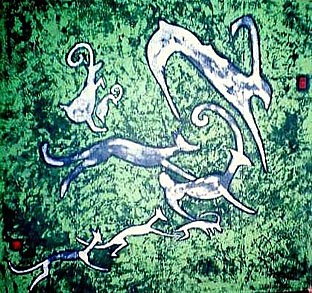
One of the scenes painted by
Professor Zhang Xi Ling from
images on cave walls along the Silk Road in far west Xinjiang.
Then, west again
to caves near the remnant oasis villages
where the artists discovered
and copied
cave drawings of
ancient, unknown origin depicting the
hunting of bison and
other animals long extinct.
|
|
| |
.....and
from there, still further west
to the ancient crossroads of Asia, Kashi Kashgar,
a city of vast bazaars
peopled still by tribal minorities including the Uygur, Kazakh and Tajik
peoples,
all of whom figure in the Silk Road Series.
|
|

